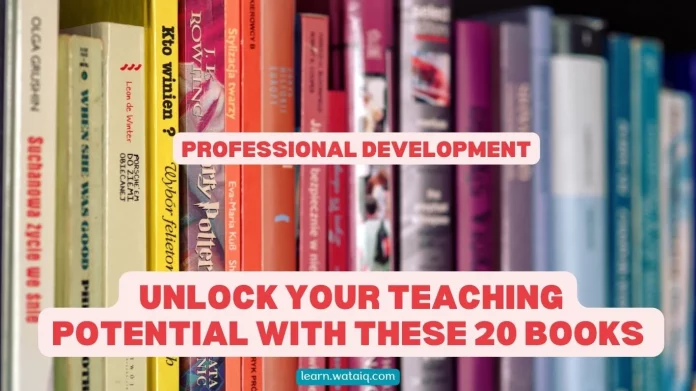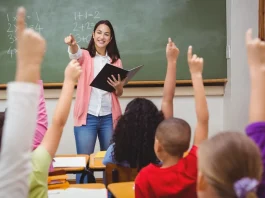In the dynamic landscape of education, standards, and instructional strategies perpetually evolve with ongoing research. As educators, staying abreast of the latest classroom concepts is paramount to providing our students with the highest quality education. Delve into the world of progressive teaching methodologies with our curated collection of 20 exceptional professional development books, designed to empower teachers across all subjects and grades. Each recommendation is accompanied by relevant links, offering a comprehensive resource for self-improvement.
Embark on a journey of knowledge and enhance your pedagogical prowess with these invaluable reads – it’s time to immerse yourself in the transformative power of professional development literature!
Table Of Contents
- 1. Assessing with Respect: Everyday Practices That Meet Students’ Social and Emotional Needs
- 2. The First Days of School: How to Be an Effective Teacher Revised Edition
- 3. Disrupting Thinking: Why How We Read Matters
- 4. Empower: What Happens When Students Own Their Learning
- 5. Understanding By Design
- 6. I Wish My Teacher Knew: How One Question Can Change Everything for Our Kids
- 7. An Educator’s Guide to STEAM: Engaging Students Using Real-World Problems
- 8. Teach Like a PIRATE: Increase Student Engagement, Boost Your Creativity, and Transform Your Life as an Educator
- 9. Why They Can’t Write: Killing the Five-Paragraph Essay and Other Necessities
- 10. Positive Mindset Habits for Teachers: 10 Steps to Reduce Stress, Increase Student Engagement, and Reignite Your Passion for Teaching
- 11. Because of a Teacher: Stories of the Past to Inspire the Future of Education
- 12. Ratchetdemic: Reimagining Academic Success
- 13. Courageous Conversations About Race: A Field Guide for Achieving Equity in Schools and Beyond
- 14. Culturally Responsive Teaching and The Brain: Promoting Authentic Engagement and Rigor Among Culturally and Linguistically Diverse Students
- 15. Blended Learning with Google: Your Guide to Dynamic Teaching and Learning (Shake Up Learning)
- 16. Cultivating Genius: An Equity Framework for Culturally and Historically Responsive Literacy
- 17. If You Don’t Feed the Teachers They Eat the Students!: Guide to Success for Administrators and Teachers
- 18. Not Light, but Fire: How to Lead Meaningful Race Conversations in the Classroom
- 19. Better Than Carrots or Sticks: Restorative Practices for Positive Classroom Management
- 20. Happy Teachers Change the World: A Guide for Cultivating Mindfulness in Education
- Final Thoughts
1. Assessing with Respect: Everyday Practices That Meet Students’ Social and Emotional Needs
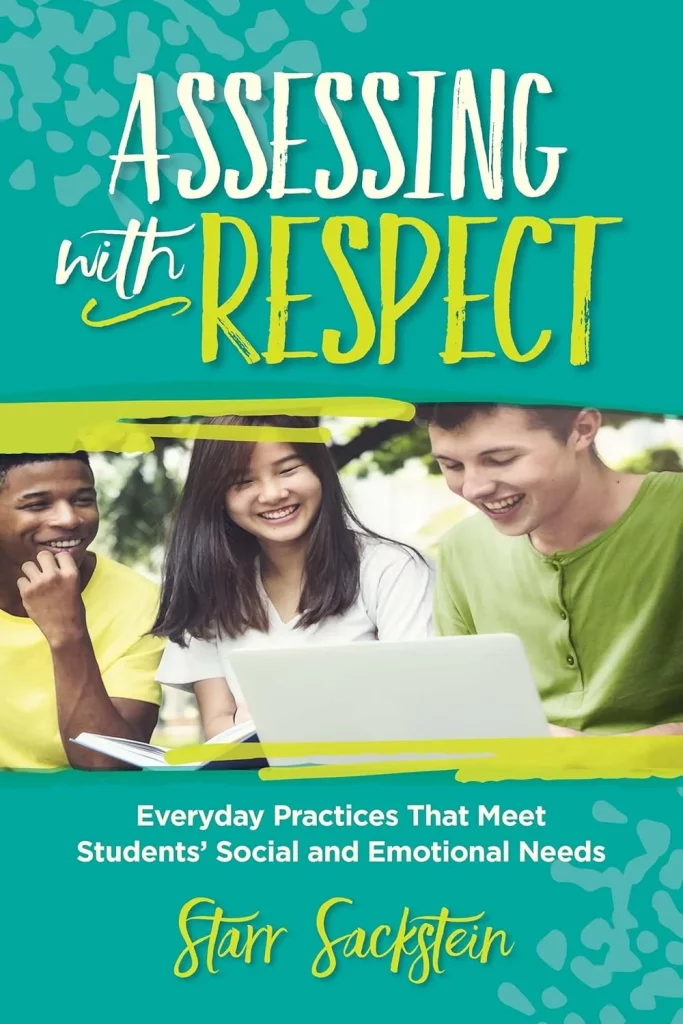
In this urgent and insightful plea for action, Starr Sackstein, an author and educator, explores the vital connection between assessment and social-emotional learning (SEL), with a special focus on its impact on students of color and marginalized groups. Addressing CASEL’s five SEL competencies—self-awareness, self-management, social awareness, relationship skills, and responsible decision-making—Sackstein illustrates how nurturing these skills enhances students’ learning and assessment experiences.
She prompts educators to:
- Reflect on implicit biases to strengthen student relationships.
- Grasp the profound influence of grades on students’ self-perception and learning potential.
- Craft personalized assessment systems ensuring fairness and accuracy.
Blending research with personal anecdotes, Sackstein advocates an SEL-based approach to assessment, emphasizing the need for educators to rethink testing’s detrimental effects on students’ self-esteem and learning potential. “Assessing with Respect” serves as a crucial guide for educators, offering insights for better academic and emotional outcomes for all students.
2. The First Days of School: How to Be an Effective Teacher Revised Edition
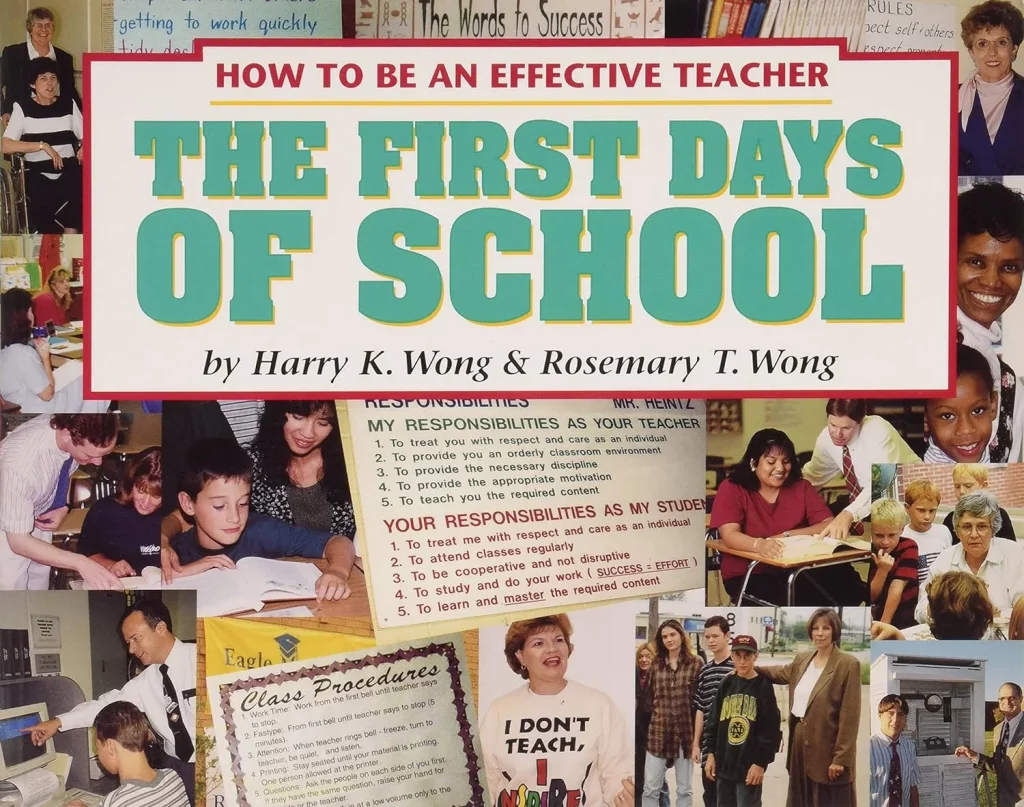
Renowned author Harry Wong delves into personal anecdotes and classroom scenarios, unveiling insights into connected learning and effective teaching strategies applicable to any classroom setting. A staple in institutions and embraced by individuals, this best-selling book illuminates the art of classroom management, offering a roadmap to cultivate innovative thinkers. With a blend of personal narratives and practical examples, Wong’s work resonates as a go-to resource for those eager to enhance their teaching prowess and create a dynamic, engaging learning environment.
3. Disrupting Thinking: Why How We Read Matters
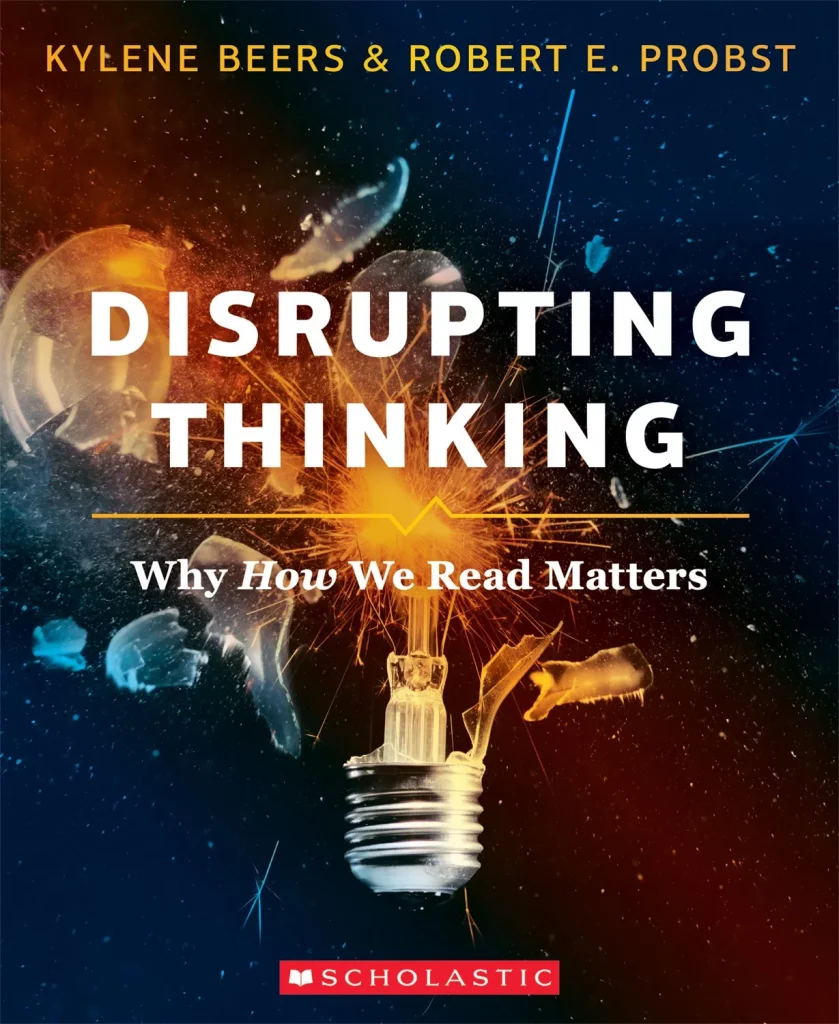
In their bestselling works “Notice and Note” and “Reading Nonfiction,” educators Kylene Beers and Bob Probst shared strategies for cultivating close readers. Now, in “Disrupting Thinking,” they tackle a persistent issue: students’ disengagement with reading. The authors argue that the problem lies in misrepresenting why and how we approach texts, be they fiction or nonfiction.
With their trademark humor and practicality, Beers and Probst envision an education where reading transcends grades. The book offers hands-on strategies for immediate classroom application and discussion points for broader school dialogues. They propose fresh approaches to help teachers:
- Foster engagement and relevance
- Promote responsive and responsible reading
- Enhance comprehension
- Cultivate lifelong reading habits
Beers and Probst assert, “It’s time we become a nation of readers, teaching students to discern fake news from real news. ‘Disrupting Thinking’ explores how we can mold students into readers who think critically beyond decoding or recalling, becoming the analytical thinkers our nation requires.”
4. Empower: What Happens When Students Own Their Learning
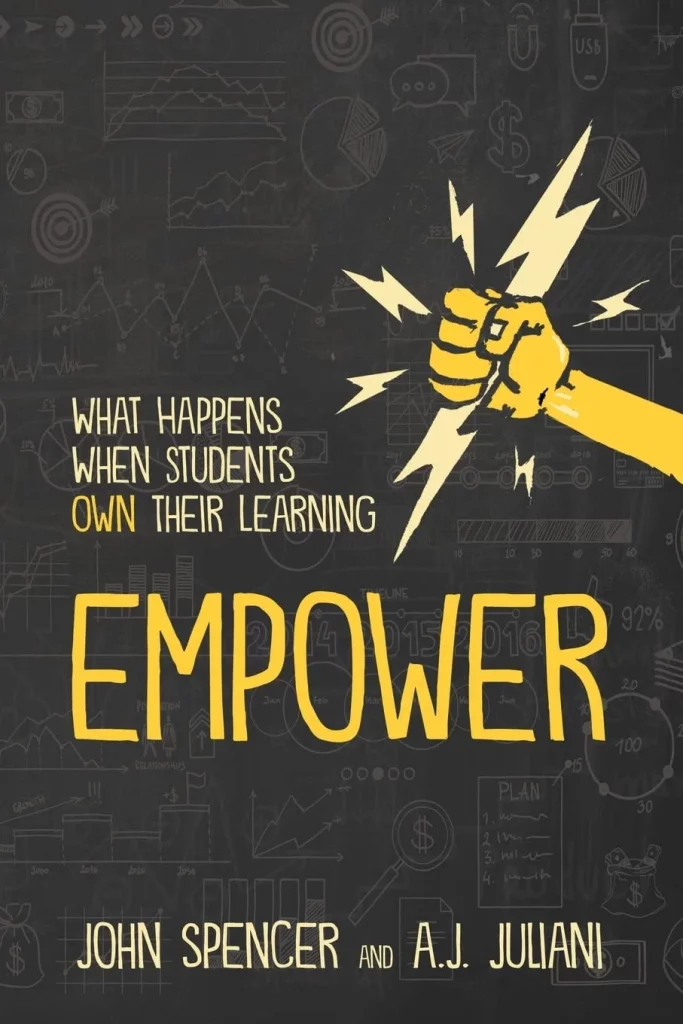
At the onset of their educational journey, children are natural problem solvers, curious and full of questions. Yet, as they progress through school, many become entrapped in the game of compliance, forsaking creativity for conformity. In “Empower,” A.J. Juliani and John Spencer call upon teachers, leaders, and parents to guide and unleash the creative potential in every student. Instead of preparing students for a predefined future, the authors advocate for preparing students to shape their own destinies. This roadmap offers educators practical ways to inspire innovation, foster authentic learning experiences, and empower students to pursue their passions. “Empower” is a beacon for:
- Teachers fostering students’ independent learning journeys
- Educational leaders navigating twenty-first-century learning environments
- Coaches, staff developers, and teacher leaders promoting professional growth
Beyond compliance and engagement, the book champions empowerment, where students crave learning that is meaningful and relevant to their lives. Real educators themselves, Juliani and Spencer address the challenges within standard curricula, offering insights to transform them into opportunities for students to be boldly distinctive and exceptional learners.
5. Understanding By Design
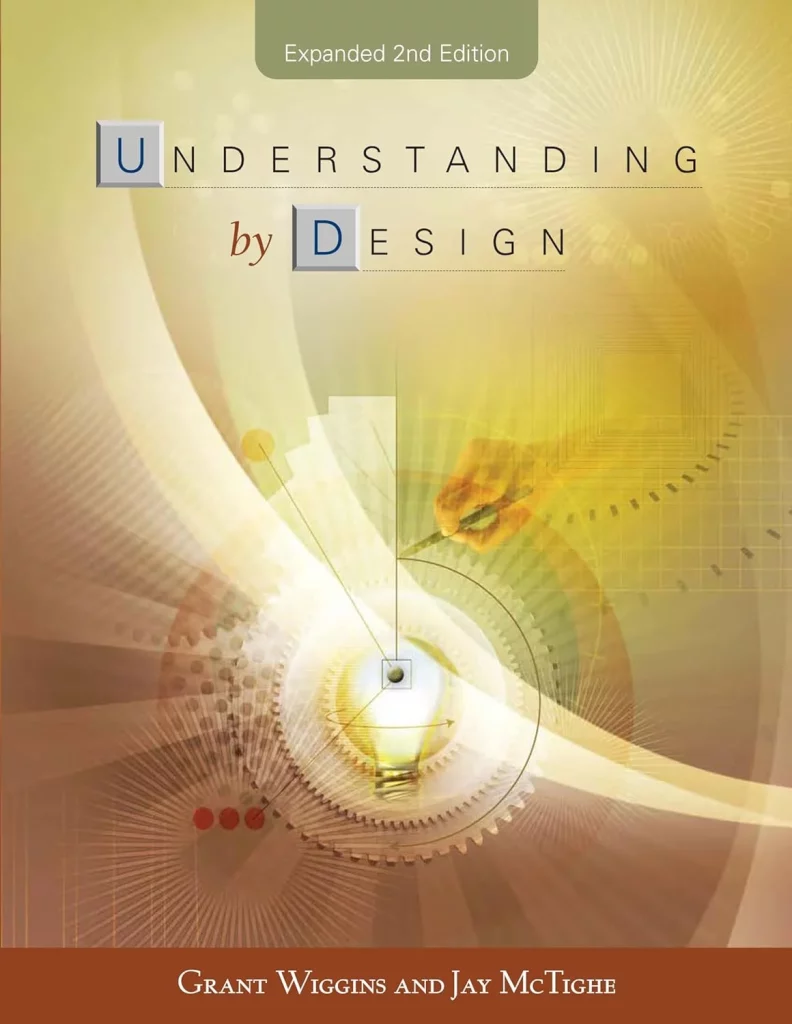
Discovering if students truly comprehend and enabling them to apply knowledge meaningfully are essential teaching goals. The second edition of the Understanding by Design (UbD) framework equips educators with enhanced tools and strategies for effective teaching:
- An improved template for crafting curriculum units through the innovative “backward design” method.
- Clearer guidelines on articulating the fundamental “big ideas” for student comprehension.
- Refined methods for developing “essential questions” that underpin high-quality curriculum and assessment.
- An expanded toolbox of instructional approaches to achieve desired lesson outcomes.
- Diverse examples, spanning all grades and subjects, illustrating how schools and districts leverage UbD to enhance student understanding.
From kindergarten to college, educators receive comprehensive resources — guidelines, stages, templates, and insights — to initiate the design of lessons, units, and courses. The UbD framework empowers educators to elevate student performance and create a more engaging learning experience for both students and teachers.
6. I Wish My Teacher Knew: How One Question Can Change Everything for Our Kids
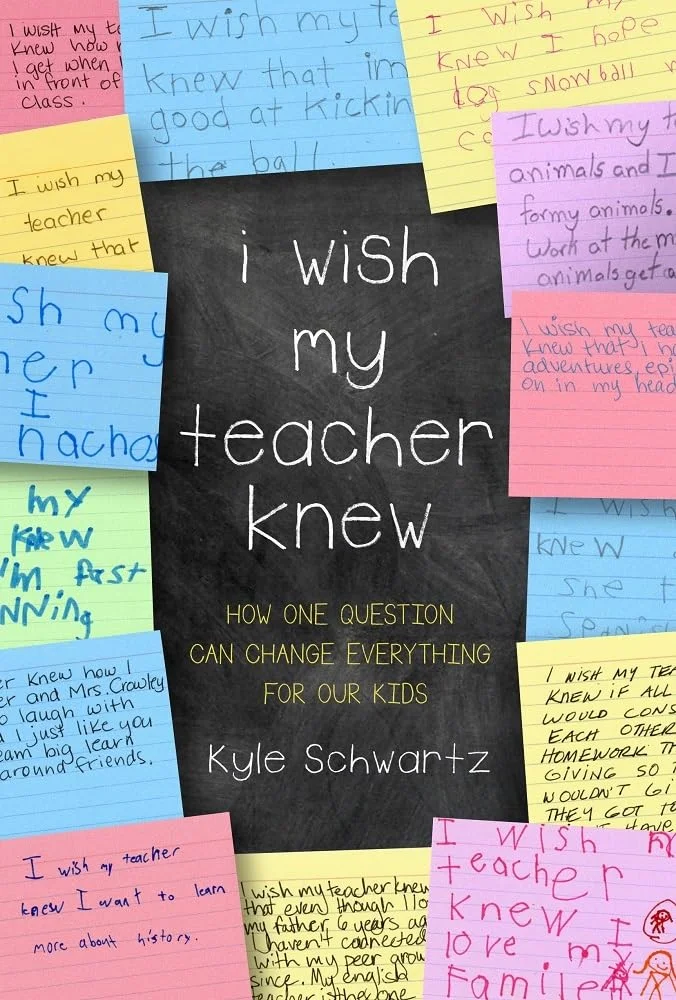
One day, third-grade teacher Kyle Schwartz posed a simple question to her students: “I wish my teacher knew _____.” The responses she received ranged from humorous to heartbreaking, unveiling a profound insight into the students’ lives. These revelations spurred Schwartz to recognize the importance of educators understanding the unique realities their students face to foster an open, safe, and supportive classroom. When she shared her experience online, #IWishMyTeacherKnew went viral worldwide. Schwartz’s book recounts the impactful #IWishMyTeacherKnew journey, featuring emotional and insightful student responses, serving as an invaluable guide for teachers, parents, and communities.
7. An Educator’s Guide to STEAM: Engaging Students Using Real-World Problems
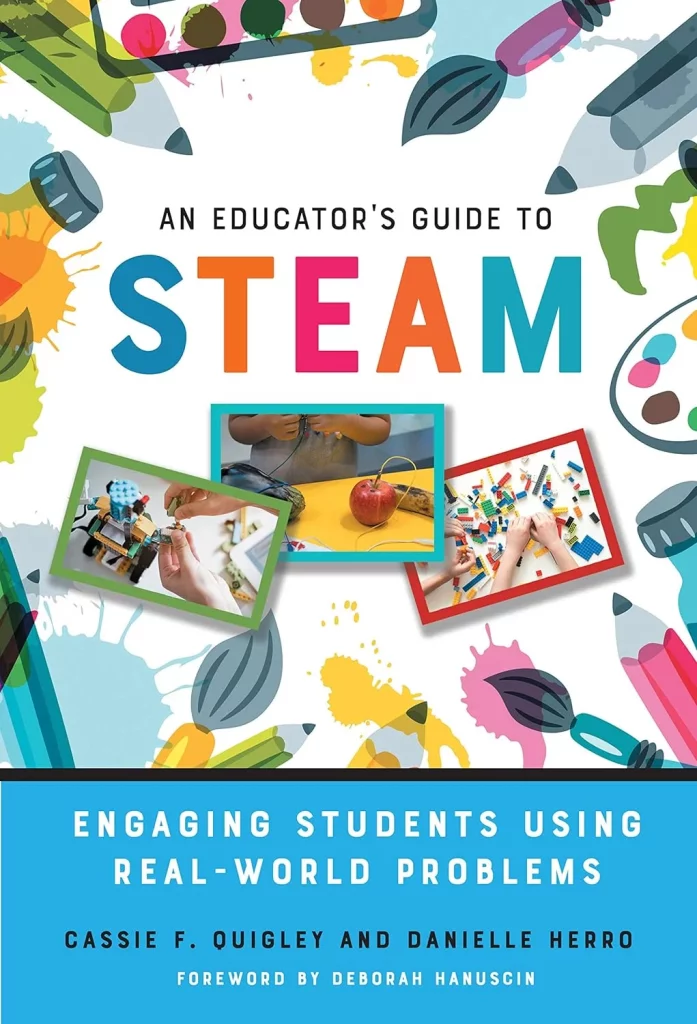
This pragmatic guide demystifies STEAM (Science, Technology, Engineering, Arts, and Mathematics), offering insights into its distinction from STEM and providing practical applications for engaging K–8 students. The authors present a comprehensive conceptual model, complete with recommendations and real classroom examples, to illuminate key aspects of effective STEAM teaching. Addressing the creation of conducive learning environments, seamless integration of STEAM content, and support for students developing related skills, the model advocates strategies like problem-based learning, student autonomy, technology integration, and teacher facilitation. Rooted in connected learning, the book showcases diverse classrooms and features firsthand accounts from educators, instructional coaches, principals, and administrators. This resource serves as a clear and concise roadmap for creating successful STEAM instructional units in K–8 classrooms.ShareSave
8. Teach Like a PIRATE: Increase Student Engagement, Boost Your Creativity, and Transform Your Life as an Educator

Derived from Dave Burgess’s dynamic “Teach Like a PIRATE” workshops, this book is a treasure trove of inspiration, practical techniques, and inventive ideas aimed at elevating student engagement, supercharging your creativity, and revolutionizing your journey as an educator. Uncover strategies to:
- Ignite and intensify your passion as an educator
- Craft irresistibly engaging lessons that magnetically captivate students
- Foster rapport and camaraderie within your classroom
- Transform your class into a life-altering experience for students
With over 30 purposeful hooks and 170 brainstorming questions tailored to enchant your class, this revolutionary manifesto promises to redefine your perspective on education. Once you grasp the Teach Like a PIRATE system, your role as an educator will undergo a transformative shift.
9. Why They Can’t Write: Killing the Five-Paragraph Essay and Other Necessities
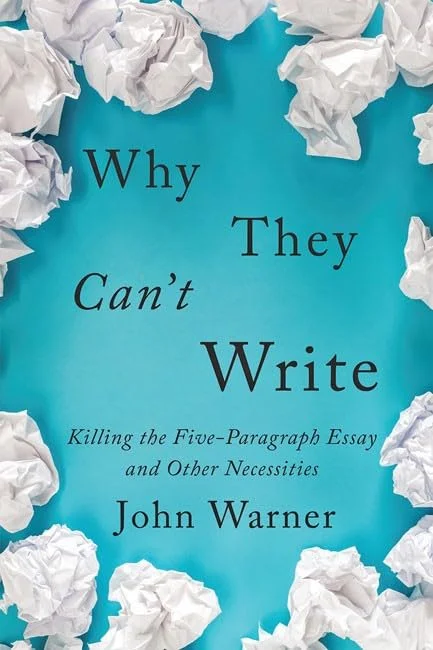
The consensus on the dire state of college students’ writing skills has led to widespread concern. In “Why They Can’t Write,” John Warner, a seasoned college writing instructor, argues against attributing this crisis to a lack of rigor, smartphones, or generational flaws. Instead, he points to a flawed approach to teaching writing that has emerged from decades of educational reforms focused on standardization, assessments, and accountability. Warner contends that our teaching methods have reduced students to performing “writing-related simulations,” hindering true writing skill development.
This book diagnoses the problem and offers a blueprint for rectifying a broken system, urging a shift towards empowering students to think critically and make choices in their writing, contrary to the current trend of rule-bound instruction.
10. Positive Mindset Habits for Teachers: 10 Steps to Reduce Stress, Increase Student Engagement, and Reignite Your Passion for Teaching
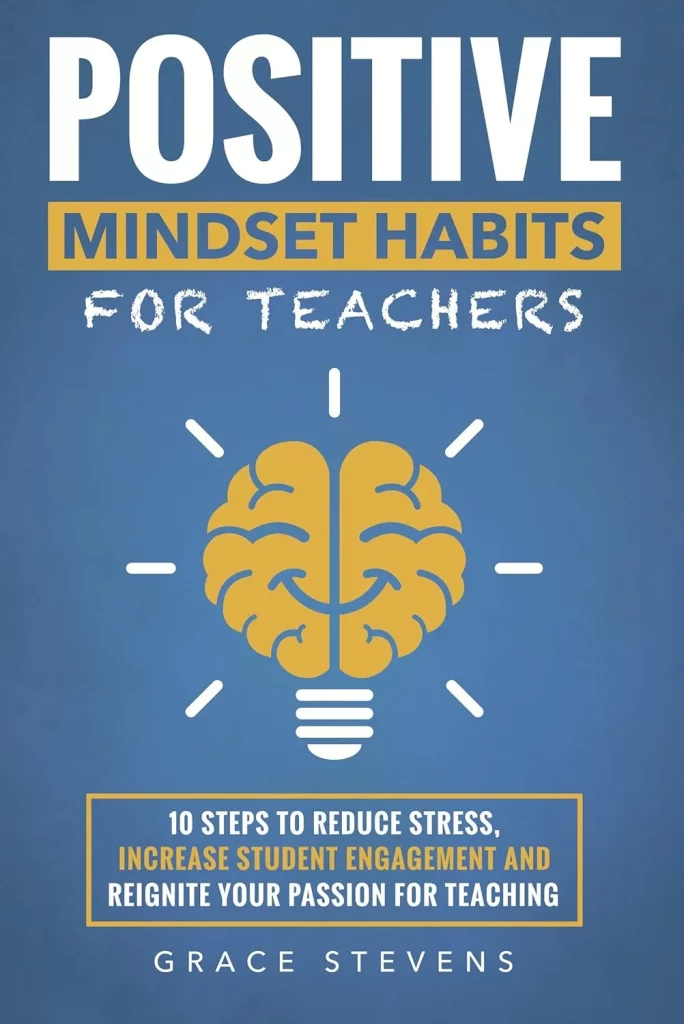
Do you yearn for heightened student engagement, improved classroom management, and a reduction in teacher stress? Imagine leaving campus at a reasonable hour, free from the burden of dragging a cart loaded with papers to grade. If you answered “Yes!” to these aspirations, then this book is your go-to resource!
Drawing on current research in positive psychology and over 15 years of practical classroom experience, this book offers a pragmatic guide to diminish stress, enhance student behavior, and infuse more joy into your teaching and life. Through 10 straightforward positive mindset habits, you’ll learn to flex your “happy muscle” and effortlessly:
- Banish teacher overwhelm and stress
- Depart from school each day invigorated and fulfilled
- Forge connections with students, transforming every group into a “dream class”
- Rediscover the passion and excitement that sparked your journey into teaching
Written in an approachable, conversational tone, this quick read is designed to bring a smile back to your face and inject laughter back into your classroom—essential elements for teacher fulfillment and student success.ShareSave
11. Because of a Teacher: Stories of the Past to Inspire the Future of Education
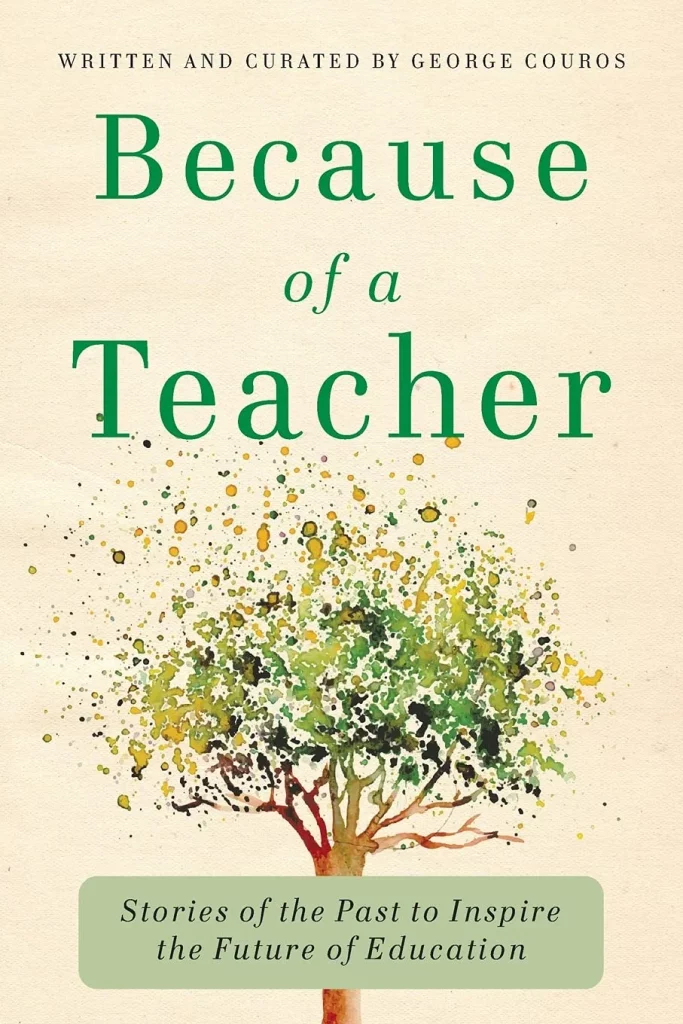
In the world of education, what you do matters. Though the acknowledgment may be rare, especially for educators, the impact you have on the lives of learners ripples out, creating a significant domino effect.
In “Because of a Teacher,” over fifteen prominent educators today pay tribute to the teachers and administrators who shaped and supported their careers. Through poignant and uplifting stories, they reminisce about their early teaching years, offering guidance and strategies tailored for both novice and seasoned educators.
These personal narratives extend hope to new teachers, provide solace to those teetering on the edge of burnout, and reaffirm that the work undertaken today will sow seeds of inspiration for generations to come. “Because of a Teacher” serves as a source of inspiration, prompting you to:
- Recall those who fueled your passion for learning
- Express gratitude to educators who advocated for you, propelled your career, and equipped you with leadership skills
- Reflect on the journey you’ve undertaken since entering the teaching profession
12. Ratchetdemic: Reimagining Academic Success
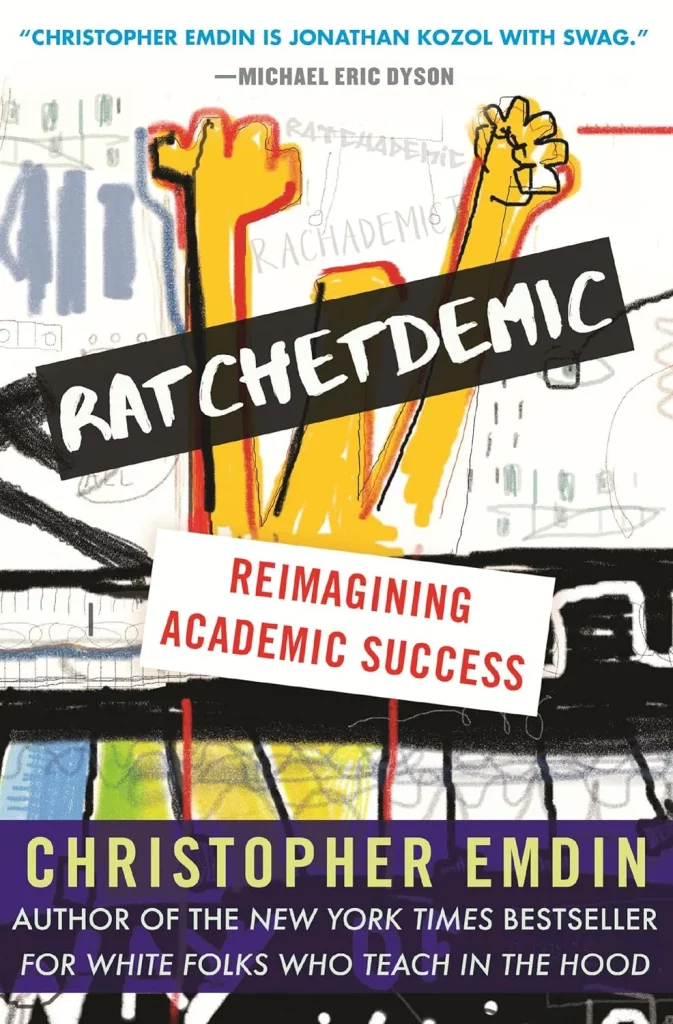
Dr. Christopher Emdin advocates for a transformative student identity that bridges the gap between the academic realm and the urban classroom, challenging the prevailing norms that often center around whiteness in modern schooling.
Emdin contends that conventional education dismisses what he terms “ratchet identity”—the embodiment of characteristics associated with perceived lowbrow culture, often attributed to specific ethnic, racial, or socioeconomic groups. This dismissal, according to Emdin, is grounded in the denigration of these traits as anti-intellectual, leading to the punishment of students who deviate from established “academic norms.” Such deviations may include behaviors labeled as “disruptive” and the celebration of hip-hop music and culture.
Emdin introduces the concept of being “ratchetdemic,” a fusion of ratchet and academic. This approach encourages students to embrace their identities, backgrounds, and education as interconnected facets rather than separate entities. It involves celebrating protest, disrupting established norms, and reclaiming the inherent brilliance of youth within the classroom.
13. Courageous Conversations About Race: A Field Guide for Achieving Equity in Schools and Beyond
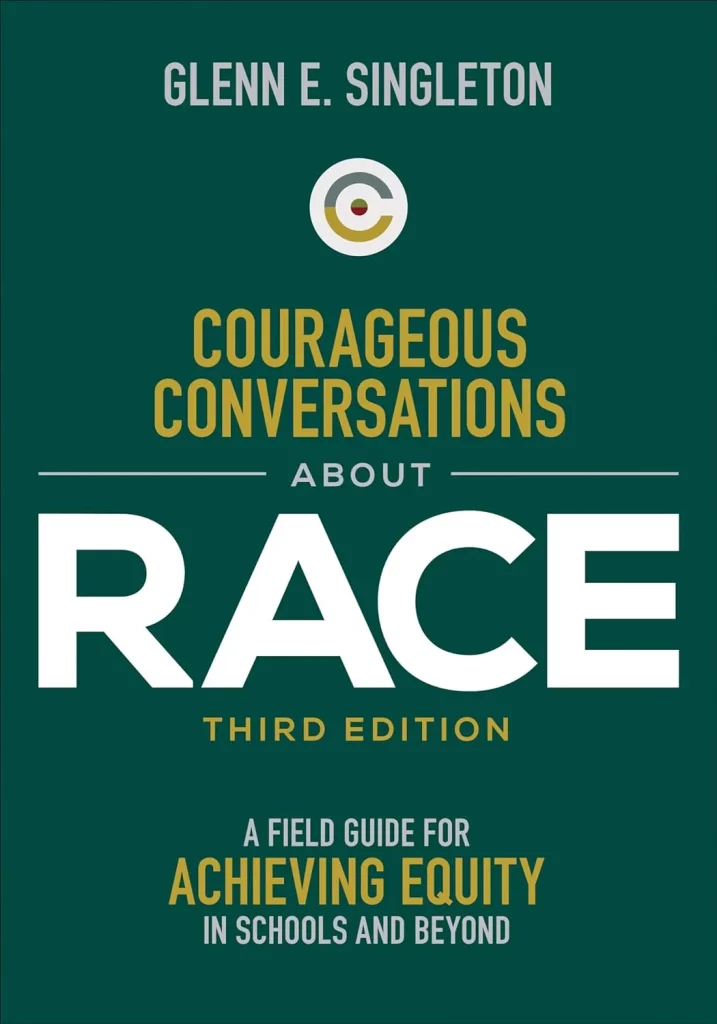
Addressing racial disparities in your organization requires breaking the silence and fostering authentic dialogue about race. In this timely third edition, Glenn Singleton equips you to navigate this challenging terrain, providing new insights into the structural inequities laid bare by the pandemic and the heightened awareness of racial injustice.
“Courageous Conversations about Race” empowers you to:
- Deepen personal understanding of race and its impact on all students
- Embrace the four agreements—stay engaged, speak your truth, experience discomfort, and accept non-closure—to enhance interracial dialogue
- Establish a foundation for equity using the Six Conditions of Courageous Conversation
- Explore the role of race in your life with the Courageous Conversation Compass, guiding your actions
- Expand leadership capacity to address institutional racism disparities and guide systemic transformation
This guide provides practical tools and insights to effectively challenge racist policies and practices, serving as a call to leadership that influences student achievement and drives meaningful systemic change.
14. Culturally Responsive Teaching and The Brain: Promoting Authentic Engagement and Rigor Among Culturally and Linguistically Diverse Students
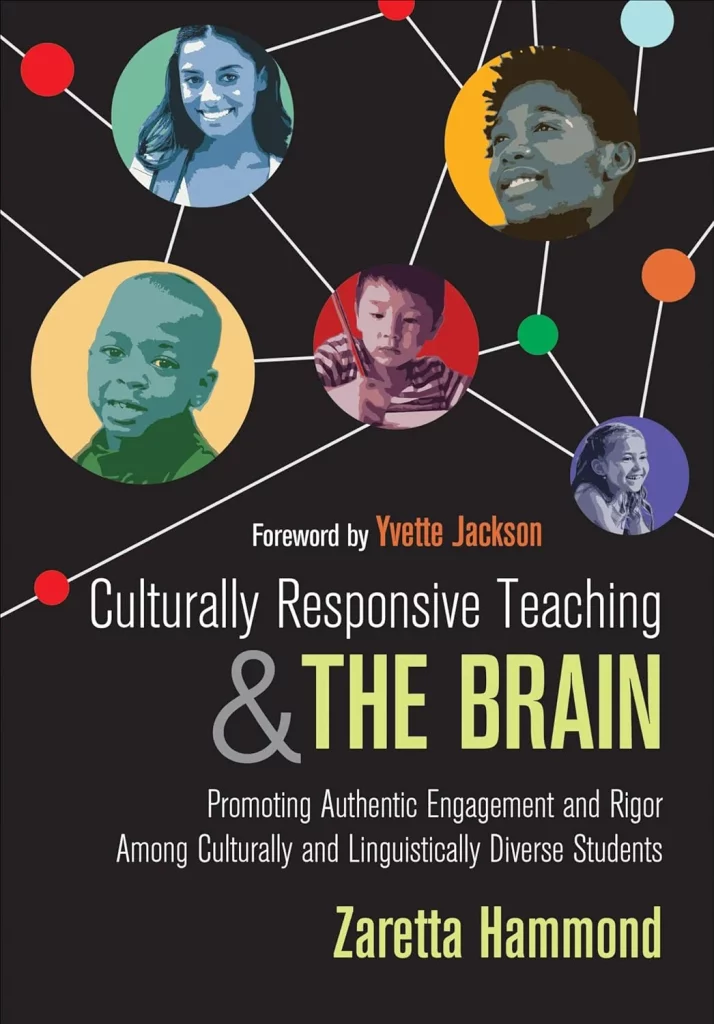
In the pursuit of closing the achievement gap, a robust, brain-based teaching approach is essential for culturally responsive instruction. Zaretta Hammond, in this groundbreaking book, leverages cutting-edge neuroscience research to present an innovative framework for designing and implementing brain-compatible culturally responsive teaching.
Key elements of the book include:
- Insights into how one’s culture influences brain processing and learning relationships
- Ten crucial “key moves” to develop students’ learner operating systems, fostering independence in learning
- Action prompts and self-reflection exercises to guide implementation
This resource equips educators with a powerful tool to enhance student engagement and address the unique needs of diverse classrooms, bridging the gap in culturally responsive instruction.
15. Blended Learning with Google: Your Guide to Dynamic Teaching and Learning (Shake Up Learning)
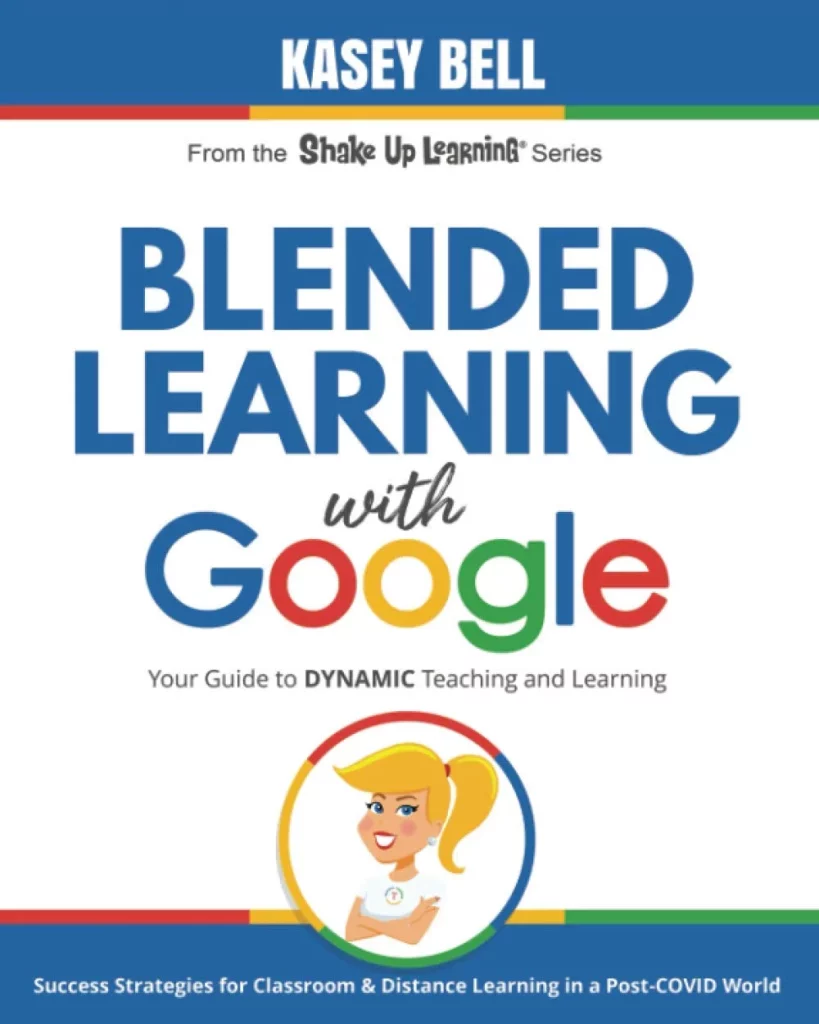
“In Blended Learning with Google,” experienced educator and bestselling author Kasey Bell unveils the transformative potential of Google tools to create dynamic blended learning experiences, whether teaching in-person, online, or a combination of both.
As life and learning increasingly shift online, traditional methods such as worksheets and one-time activities fall short. To truly serve students in this digital age, educators must embrace Dynamic Learning beyond the confines of traditional classrooms. Bell, your personal Google guide, infuses this book with practical ideas and strategies, blending southern charm with actionable insights.
The three-part book covers the Dynamic Blended Learning Framework, aligning classroom strategies with Google tools, and planning and implementing Blended Learning with Google. Highlights include:
- A practical framework for meaningful Blended Learning
- Digital learning strategies applicable to any classroom
- Google templates, lesson plans, pro tips, remote learning strategies, and more
This book transcends a mere focus on Google; it’s a guide on leveraging Google tools to cultivate Dynamic Learning for your students on a daily basis.
16. Cultivating Genius: An Equity Framework for Culturally and Historically Responsive Literacy
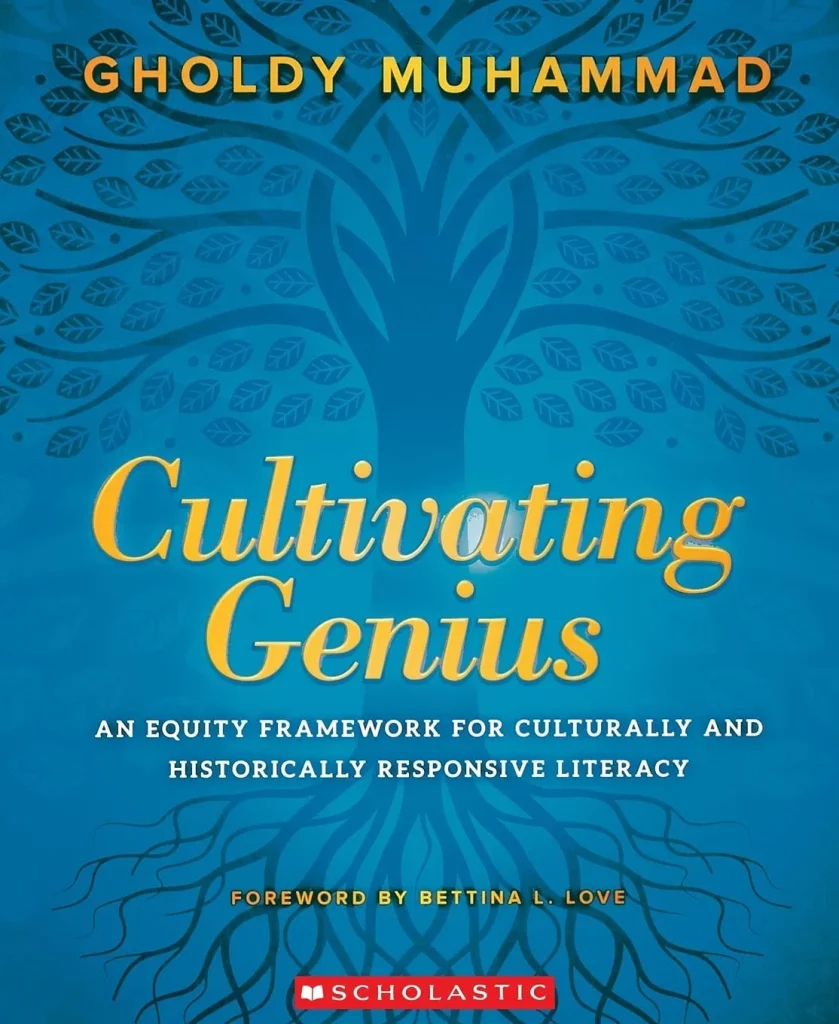
In “Cultivating Genius,” Dr. Gholdy E. Muhammad introduces a powerful four-layered equity framework, Historically Responsive Literacy, rooted in history and designed to restore excellence in literacy education. This framework is a universal guide, particularly crucial for marginalized students, emphasizing the learning goals of:
- Identity Development: Helping youth make sense of themselves and others.
- Skill Development: Cultivating proficiencies across academic disciplines.
- Intellectual Development: Acquiring knowledge and enhancing intellectual capabilities.
- Criticality: Learning to read texts, including print and social contexts, to comprehend power, equity, and anti-oppression.
By integrating these four learning pursuits through the Historically Responsive Literacy Framework, all students, especially those traditionally marginalized, gain profound opportunities for personal, intellectual, and academic success. Muhammad provides thought-provoking, self-reflective questions for educators, leaders, and teacher educators, along with culturally and historically responsive sample plans and text sets across grades and content areas. The book offers practical approaches to unleash the genius within students and teachers alike.ShareSave
17. If You Don’t Feed the Teachers They Eat the Students!: Guide to Success for Administrators and Teachers
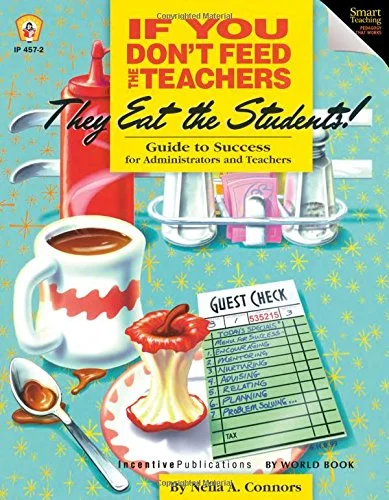
“If You Don’t Feed the Teachers They Eat the Students!” is a guide to success for administrators and teachers, packed with wisdom and inspiration. Dr. Neila Connors offers practical tips to enhance school climate, foster effective communication with parents and students, align teaching with standards, and ultimately make a positive impact on students’ lives. Presented in an enjoyable and easy-to-read format, this book is an essential resource for administrators and teachers alike. With humor and practical insights, it promises to leave readers laughing their way to a more successful school year.
18. Not Light, but Fire: How to Lead Meaningful Race Conversations in the Classroom

In “Not Light, But Fire: How to Lead Meaningful Race Conversations in the Classroom,” inspired by Frederick Douglass’s call to action, author Matthew Kay guides educators on initiating and facilitating productive dialogues about race. Moving beyond surface-level discussions, Kay provides a method for navigating the most challenging conversations, offering candid guidance on:
- Recognizing Meaningful Conversations: Distinguishing between conversations that matter and those that are inconsequential.
- Building Safe Spaces: Going beyond declarations to create conversational safe spaces.
- Infusing Urgency and Purpose: Adding depth and significance to race conversations.
- Thriving in Challenges: Navigating unexpected hurdles with resilience.
Kay emphasizes the need for urgency and purpose in race conversations, highlighting the importance of recognizing and addressing systemic issues. He also offers insights on how administrators can equip teachers to engage thoughtfully in these discussions. With a blend of reflection and humility, Kay asserts that educators can transform schools into powerful venues for meaningful race conversations.
19. Better Than Carrots or Sticks: Restorative Practices for Positive Classroom Management
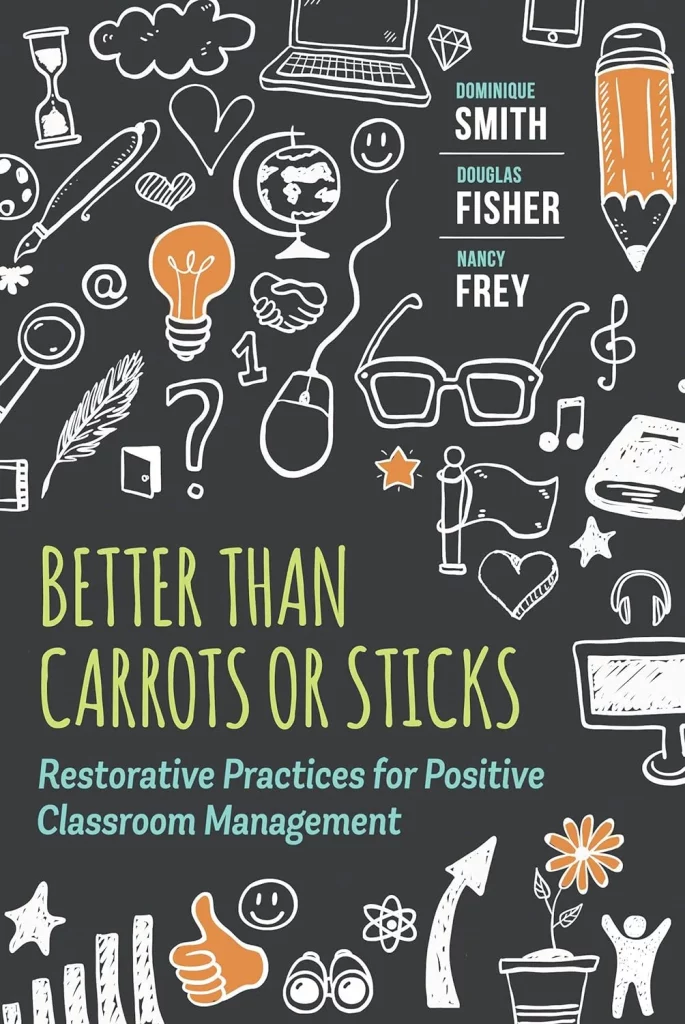
In “Better Than Carrots or Sticks,” authors Dominique Smith, Douglas Fisher, and Nancy Frey offer a practical blueprint for cultivating a cooperative and respectful classroom environment where students and teachers collaboratively address behavioral issues. After tracing the roots of the restorative practices movement in schools, the authors guide educators on how to:
- Establish Procedures and Expectations: Encouraging the development of positive interpersonal skills.
- Develop Rapport: Building a nonconfrontational connection with even the most challenging students.
- Implement Conflict Resolution Strategies: Prioritizing relationship building and mutual understanding over punitive measures.
While rewards and punishments may provide short-term order, they are often superficial and, at times, counterproductive. This book equips teachers at all levels to create welcoming, enriching, and constructive classrooms based on collective respect and focused on student achievement.
20. Happy Teachers Change the World: A Guide for Cultivating Mindfulness in Education
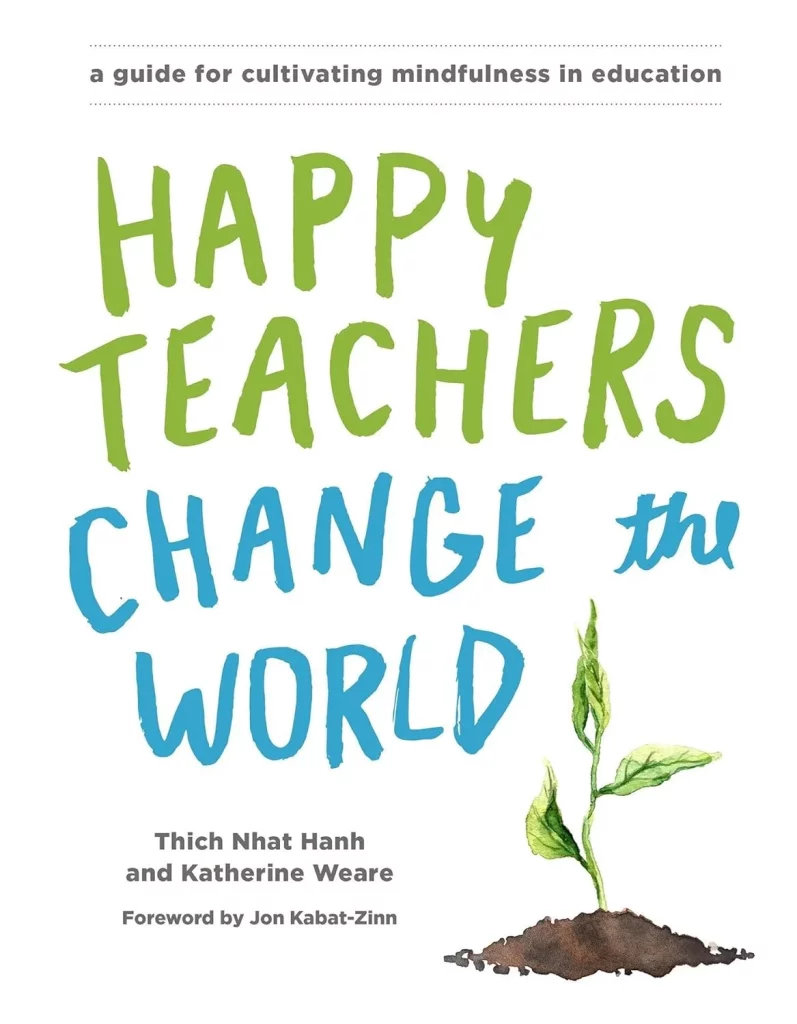
“Happy Teachers Change the World: A Guide for Cultivating Mindfulness in Education” advocates the Plum Village approach to mindfulness in schools, emphasizing the importance of educators establishing their own mindfulness practice as the foundation for their work in the classroom. This guide offers easy-to-follow, step-by-step techniques designed by teachers to support their colleagues in building a mindfulness foundation and better assisting their students. The book includes:
- Basic Mindfulness Practices: Taught by Thich Nhat Hanh.
- Guidance from Educators: Sharing their experiences with these practices in the classroom.
- In-Class Interpretations, Activities, Tips, and Instructions: Offering practical insights.
- Inspirational Stories: From teachers, administrators, and counselors.
Filled with motivational anecdotes and mindfulness exercises from Thich Nhat Hanh and the Plum Village community, this guide serves as a valuable tool for educators to bring calm, focus, and rejuvenation to their classrooms.
Final Thoughts
In the dynamic realm of education, these 20 professional development books offer practical insights for educators. From social-emotional learning to effective teaching strategies, each recommendation serves as a resource for self-improvement. Transitioning from assessing concerning fostering a positive mindset, these books cover diverse topics in a readable, human tone. Whether exploring STEAM, redefining teaching roles, or addressing racial disparities, the curated collection guides educators toward transformative practices. Embrace the journey of continuous learning, innovation, and empowerment for a better educational experience.
Read More:
Effective Instructional Strategies Unveiled: A Handbook of 58 Exciting Approaches
58+ Top Workbooks For 1st Grade Students
12 Digital Art Websites for Students – Unleash Creativity in the…
